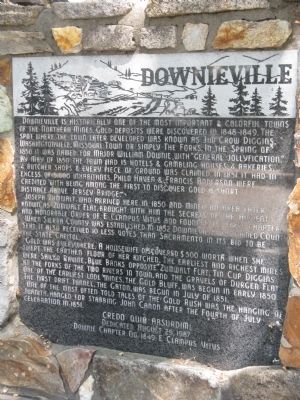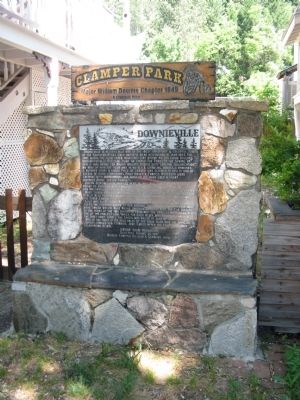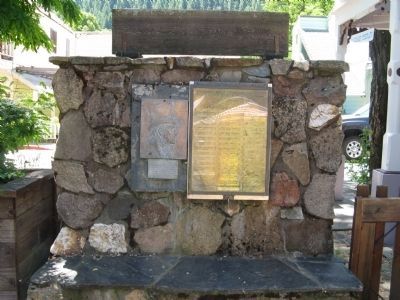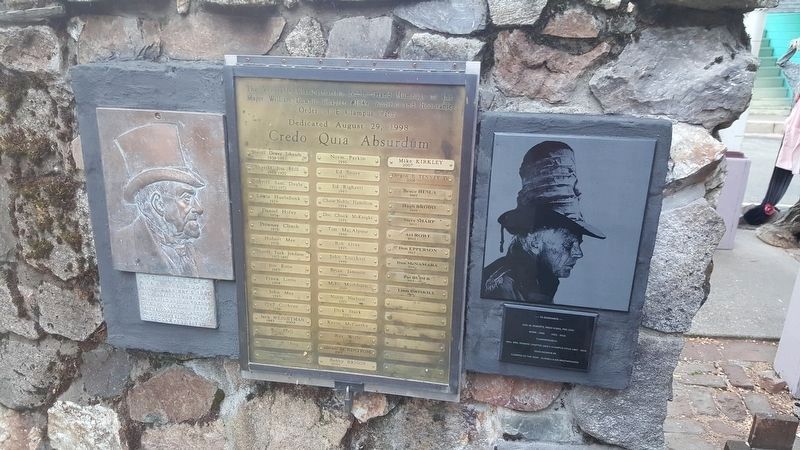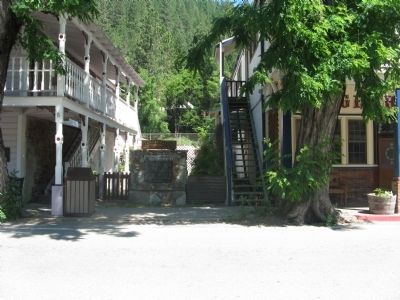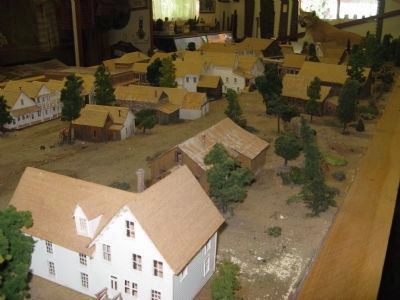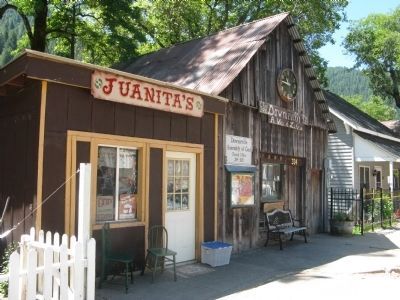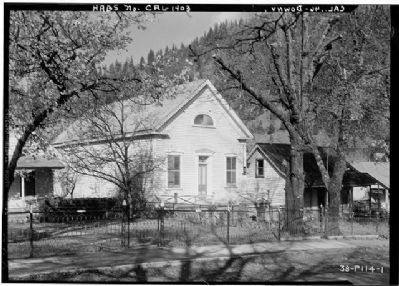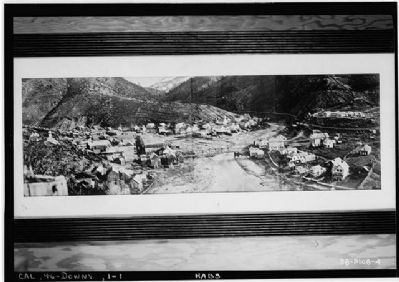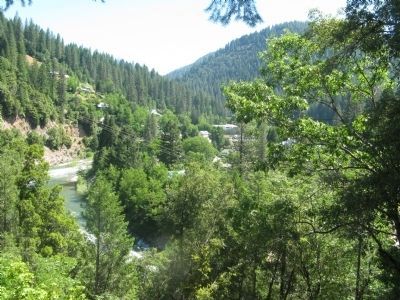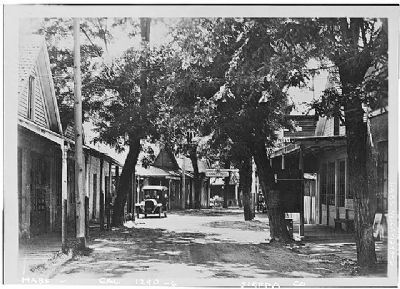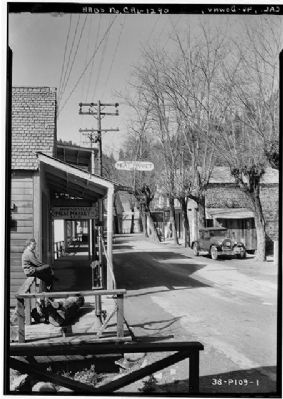Downieville in Sierra County, California — The American West (Pacific Coastal)
Downieville
Joseph Zumwalt, who arrived here in 1850 and mined an area later known as Zumwalt Flat, brought with him the secrets of the Ancient and Honorable Order of E Clampus Vitus and founded its first chapter.
When Sierra County was established in 1852 Downieville was named County Seat. It also received 10 less votes than Sacramento in its bid to be the state capitol.
Gold was everywhere. A housewife discovered $500 worth when she swept the earthen floor of her kitchen. The earliest and richest mines were Sailor Ravine, Blue Banks opposite Zumwalt Flat, Tin Cup Diggins at the forks of the two rivers in town, and the gravels of Durgen Flat. One of the earliest Lode mines, the Gold Bluff, was begun in 1850. The first drift tunnel, the Caton, was begun in July of 1851.
One of the most often told tales of the Gold Rush was the hanging of Juanita, hanged for stabbing John Crow after the Fourth of July celebration in 1851.
Erected 1987 by Downie Chapter No. 1848, E Clampus Vitus.
Topics and series. This historical marker is listed in these topic lists: Industry & Commerce • Settlements & Settlers. In addition, it is included in the E Clampus Vitus series list. A significant historical month for this entry is May 1850.
Location. 39° 33.628′ N, 120° 49.661′ W. Marker is in Downieville, California, in Sierra County. Marker is on Main Street east of Commercial Street (California Highway 49), on the left when traveling east. The marker is located at the small area known as Clamper Park, next to the Mountain Messenger-Mackerman & Company Building. Touch for map. Marker is at or near this postal address: 315 Main Street, Downieville CA 95936, United States of America. Touch for directions.
Other nearby markers. At least 8 other markers are within walking distance of this marker. Mackerman & Company Building (here, next to this marker); St. Charles Hotel (a few steps from this marker); The Shooting of Thaddeus Purdy (within shouting distance of this marker); Downieville Museum (within shouting distance of this marker); Arrastra (within shouting distance of this marker); Craycroft Building (within shouting distance of this marker); In Memory of Juanita (within shouting distance of this marker); Downieville Veterans Memorial (within shouting distance of this marker). Touch for a list and map of all markers in Downieville.
Regarding Downieville. The town was named after Major William Downie, who is said to have offered to throw a pan of gold dust in the street if the town was named after him.
Additional views of buildings and street scenes can be seen on nearby Downieville marker pages.
Also see . . . Downieville. An informative article on the history of Downieville. (Submitted on June 29, 2011.)
Additional commentary.
1. Downieville, 1849
From the Sierra Democrat, April 1858:
"This spot where the town stands was then the handsomest I have ever seen in the mountains. Long willows waved on the banks of the North Fork, small pine and spruce trees stood in beautiful groups where the saloons now stand; the hillsides were covered with pretty oaks, stretching
out their strong branches and thick foliage, sheltering the Indian wigwam; and here and there a tall pine towered over everything. But the miner and the trader spared none of these; the willows were uprooted, the pine and spruce were cast out upon the Yuba's current, the branches were lopped from the oaks, and their trunks made heat for sordid flapjacks; the tall pine was laid low and all was changed"
William Downie - Personal Reminiscences of 1849.
Source: Downieville Walking Tour Brochure - Downieville Museum.
— Submitted June 29, 2011.
Additional keywords. Gold Rush
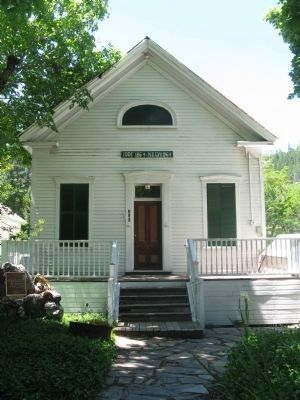
Photographed By Syd Whittle, June 27, 2011
8. I.O.O.F Hall
This building, built circa 1864 was originally the IOOF Hall. It was purchased in 1952 by the Native Daughters of the Golden West, whose parlor was organized here in 1888. It now houses the Downieville Library.
The plaque seen at the left of the photo reads:This building dedicated to the memory of
The Pioneers
of Sierra County
by Naomi Parlor No. 36
Native Daughters of the Golden West
1964
The plaque seen at the left of the photo reads:
The Pioneers
of Sierra County
by Naomi Parlor No. 36
Native Daughters of the Golden West
1964
Credits. This page was last revised on August 29, 2017. It was originally submitted on June 29, 2011, by Syd Whittle of Mesa, Arizona. This page has been viewed 991 times since then and 42 times this year. Photos: 1, 2, 3. submitted on June 29, 2011, by Syd Whittle of Mesa, Arizona. 4. submitted on August 29, 2017, by Frank Gunshow Sanchez of Hollister, California. 5, 6, 7, 8, 9, 10, 11. submitted on June 29, 2011, by Syd Whittle of Mesa, Arizona. 12, 13. submitted on June 28, 2011, by Syd Whittle of Mesa, Arizona.
